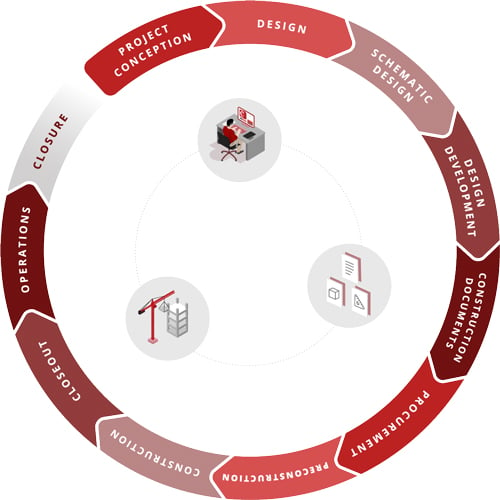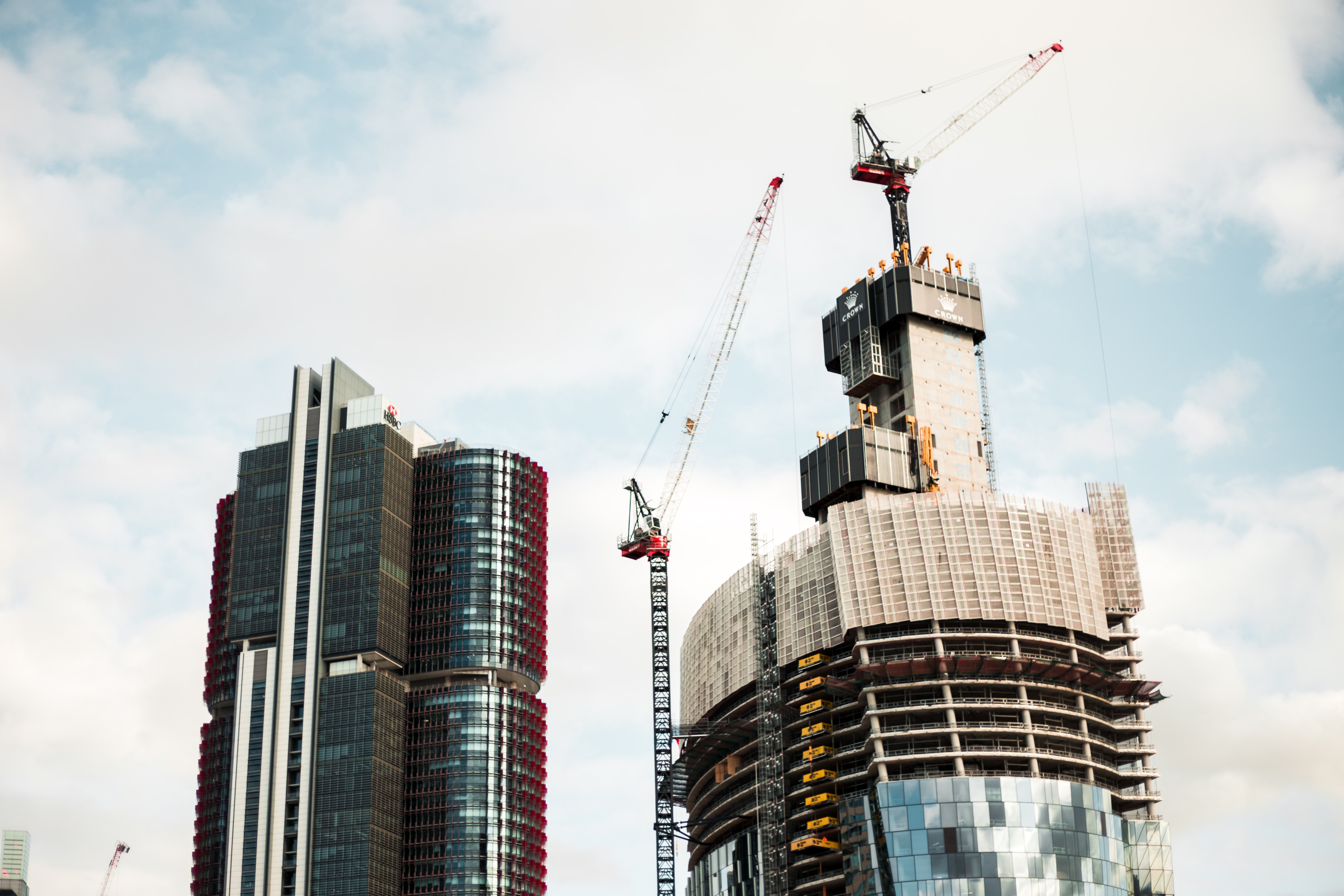All types of facilities have a beginning, an active service life, and an ending. The ending for a facility may involve demolition, deconstruction, or repurposing. As a building product manufacturer, understanding the stages of a facility life cycle and the various steps involved in the construction of a facility allows you insight into the bidding process and knowledge about how your product data may be used throughout the stages.
In this article, we will discuss the facility life cycle. We will be publishing a follow-up to this article to discuss how your product data moves through the life cycle of a facility along with your BIM models.
Facility Life Cycle First Phase: Project Conception
In the first phase of a facility, an owner identifies a need and outlines a project delivery plan and identifies the decisions that need to be made. They determine the location, and type of project and develop the project requirements. The owner will anticipate costs and develop a budget for the project including the construction budget, and a preliminary estimated schedule for the time needed for design and construction.
During the project conception phase, due diligence studies take place and design objectives are proposed. If the project includes renovations, there may be historic preservation implications. The functional and operational objectives for the facility are determined. Financial issues for the construction and facility are reviewed. Safety and security are examined, and sustainability principles are determined. The minimum expected life cycle for the facility is also outlined.
Facility Life Cycle Second Phase: Design
If an architecture/engineering team was not part of the project conception phase, the owner will select the architecture/engineering team during the design phase. Service agreements are created and the basis of compensation is established. The architect/engineer retains the necessary team members for design work. The ideas from the project conception stage are turned into architectural designs.
Facility Life Cycle Third Phase: Schematic Design
During this phase, designs are developed in more detail and may include information on size and shape.
Facility Life Cycle Fourth Phase: Design Development
In the design development phase, details are further defined. This is where product information provided by building product manufacturers can start to come into play. The selection of materials, colors, and finishes will be done during this stage as aesthetic elements are refined. These details allow for realistic cost estimates to be created. Cost studies for the life cycle of the facility will be made to assist in the selection of products, systems, and materials.
The design files of building product manufacturers may be obtained by the design team and reviewed for suitability for the facility.
Facility Life Cycle Fifth Phase: Construction Documents
In this phase, construction documents are prepared. This includes the project manual, project specifications, and drawings.
Facility Life Cycle Sixth Phase: Procurement
Following approval of the construction documents by the owner, the documents are issued as procurement documents. Procurement documents are provided to prospective contractors who solicit bids from suppliers and subcontractors and submit their own bids to the owner. Bids are vetted and the successful bidder is chosen. For private construction projects, the owner will choose the bid they prefer. For public work, the governing body may be required to accept the lowest bid.
Facility Life Cycle Seventh Phase: Preconstruction
During preconstruction, a contractual agreement between the contractor and owner will be written and executed. The contractor submits certification of insurance coverage to the owner, and preconstruction submittals are submitted to the owner before the agreement is finalized. Once finalized, the owner issues a notice to proceed to the contractor. The contractor retains subcontractors, issues purchasing orders for equipment, products, and materials, and mobilizes onto the construction site.
Facility Life Cycle Eighth Phase: Construction
The activities of the contractor are concentrated in the construction phase. The contractor coordinates construction and safety at the project site. Construction project management defines the means and methods of construction and schedules and sequences the work. They work with subcontractors on erecting, applying, and installing products, systems, and materials. The contractor provides submittals to the architect/engineer for review.
On-site the contractor ensures the project site is maintained, clean, and installed work is protected. They accept delivery and arrange storage for equipment, products, and materials. The contractor is also responsible for maintaining records of changes and variations in construction and making applications for payment.
The architect/engineer provides construction contract administration. They represent and act on the owner's behalf, and keep the owner informed of progress. They are responsible for replying to requests for information from the contractor, interpreting contract documents and issuing modifications as required. The architect/engineer reviews and acts on contractor submittals and certifies the contractor’s applications for payment.
The architect/engineer also must observe the work and require inspecting and testing as indicated in the specifications. They may reject the work of the contractor. They also authorize minor changes and prepare change orders and construction change directives.
Facility Life Cycle Ninth Phase: Closeout
Once the construction phase is complete, the contractor provides closeout submittals such as operations and maintenance information, and project records. The contractor also facilitates training and demonstrations as required. They prepare a list of unfinished items known as a punch list when they believe the project is complete and request a certificate of substation completion. Substantial completion means the project is fit for its intended use.
The architect/engineer inspects the project and if they agree with the contractor, issues a certificate of substantial completion and certifies the contractor's final application for payment. The owner can move into the project, which is now a facility. When the contractor receives the final payment, the project is complete. The owner gains full use of the facility, and the facility manager assumes responsibility for operations and maintenance.
Facility Life Cycle Tenth Phase: Operations
During this stage, the owner or another agent occupies, manages, and maintains the facility. This phase may also include facility renovation, remodeling, or repair.
Facility Life Cycle Eleventh Phase: Closure
A facility enters the closure phase when the facility no longer meets the needs of the owner. This stage includes closure of the facility, preparation for unknown future use, foreclosure, sale, and part or whole demolition of the facility. This phase closes the loop of the facility life cycle, as the next stage would be Project Conception for the future use of the location.
During all of the phases of the facility life cycle, information is required to ensure the design requirements are met, and the design intent of the owner is carried out. Building product manufacturers can make the tasks of specifying their products or systems easier by having high-quality design files available for the design team, and knowledgeable staff to address the concerns of the design team or contractor. The design files include written specifications, BIM models, CAD models, and SketchUp models. CADdetails creates and distributes these files for building product manufacturers to help them get their products specified into projects.

cover image Ⓒ Pexels

